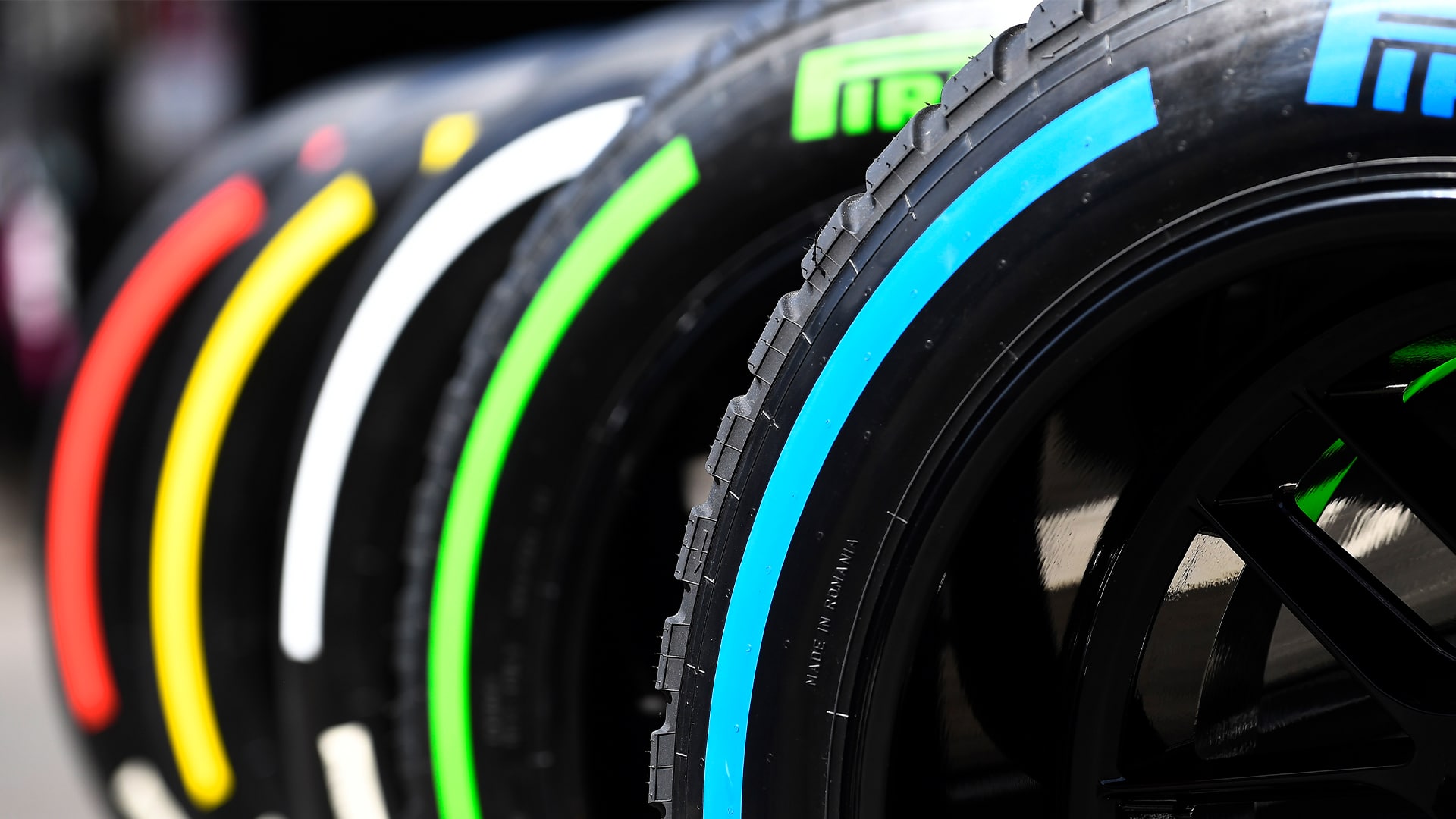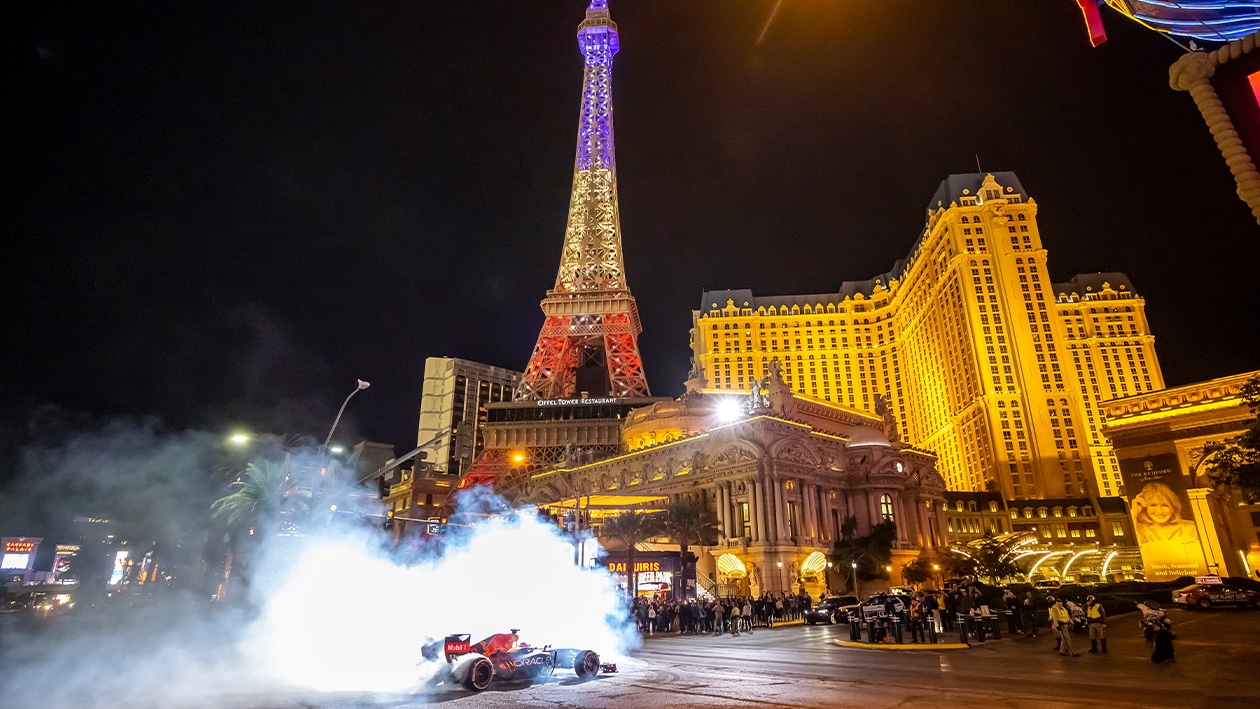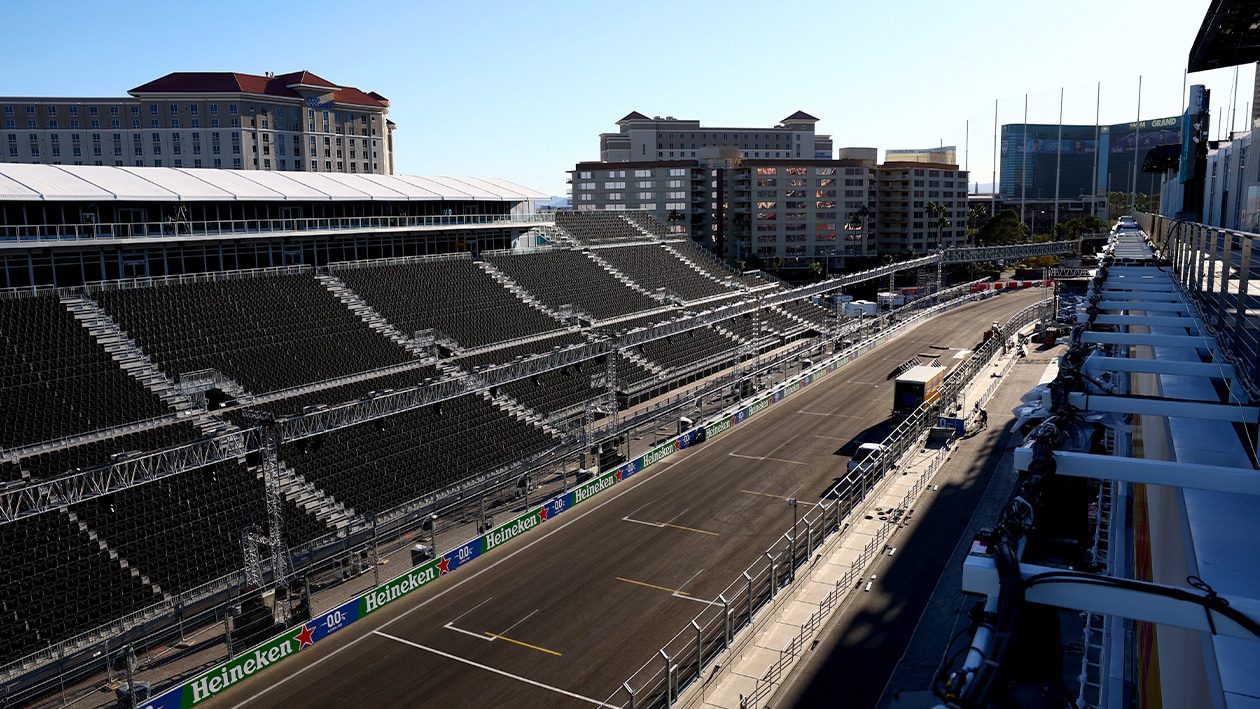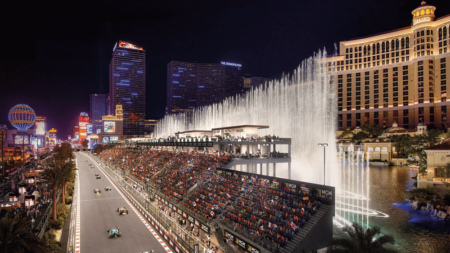Cars will slow from around 212mph to 50mph as they race down the Strip and into Turn 14, which will send brake temperatures soaring. Some cooling is required, but not too much because that previous Strip section is a 1.1-mile flat-out blast where the brakes will lose temperature rapidly, potentially becoming least effective just at the point where they are most needed in the braking zone.
That’s just the most extreme example: drivers are expected to spend around 80% of the lap at full throttle (compared to 70% at Silverstone), so there are only limited opportunities to generate brake heat.
It will be no surprise to see wheels locking up, cars running wide and crashes or collisions, as drivers suddenly find themselves with a shortage of stopping power.
Getting F1 tyres to their optimum temperature in Las Vegas

Cold cracking, excessive cooling and a lack of data could also present serious problems for drivers and their tyres
Grand Prix Photo
Overheating tyres are unlikely to be an issue in Las Vegas, where drivers will be doing all they can to keep the temperatures up for maximum grip.
Pirelli is bringing its very softest tyres to Nevada but even so, grip is expected to be at a premium. The high-speed laps will send surges of cold air over the tyres, and there are few fast corners where heat can be generated. The surface is not expected to offer much help either.
“It will be a major technical challenge for both the teams and us,” said Pirelli head of motor sport Mario Isola. “We head into this race with no real references apart from simulation. Nobody has ever actually driven the Las Vegas Strip circuit before, and there won’t be any support races and the track will be opened again to normal traffic for long chunks of the day, which means that the surface won’t rubber in as usual and deliver improved grip.




